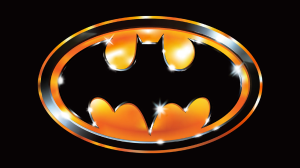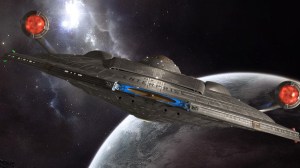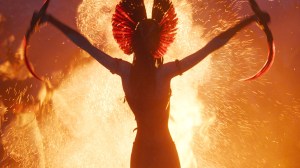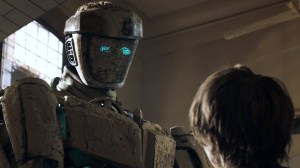Eric Pearson has become an integral fixture in the MCU. The Marvel Writers’ Program graduate assembled a ragtag gang of anti-heroes in the feature film Thunderbolts* before that, he fleshed out Natasha Romanoff’s history in Black Widow and averted a cataclysmic destruction of Asgard in Thor: Ragnarok. Pearson’s current project ushered in Marvel’s latest phase with The Fantastic Four: First Steps.
Videos by ComicBook.com
Producer Roger Corman introduced a live-action, low-budget Fantastic Four in 1994. Next came a pair of Fox adaptations that pitted the heroes against Dr. Doom and a cloudy Galactus. A 2015 reboot, which bombed, featured a younger iteration of the group once again facing Dr. Doom. Set in the 1960s, Fantastic Four: First Steps centers on the superhero family as Sue gives birth to her son, Franklin, and the cosmic world-devourer, Galactus, targets the planet.
ComicBook caught up with Pearson to discuss the 1960s setting, Susan Storm’s death, the coming of Galactus, and the future of the team.
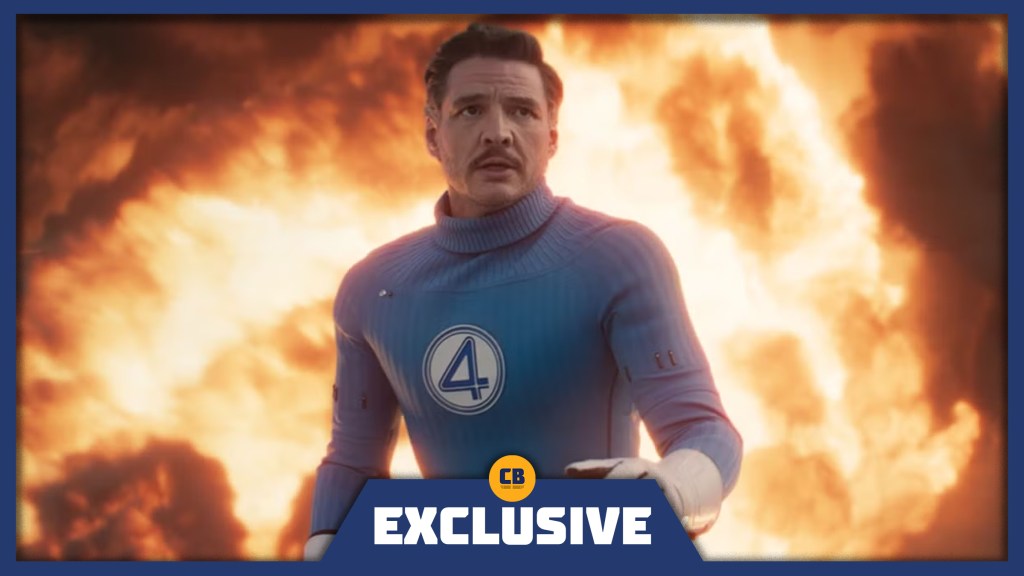
ComicBook: How does it feel to have not one, but two Marvel movies out in a year? Can you talk about how you got your foot in the superhero door?
Eric Pearson: It feels great. I feel like these two movies have been very well received. I have such a major affection and so much pride in Thunderbolts* and Fantastic Four, but so many other people contributed to Fantastic Four. Josh Friedman. Ian Springer. Jeff Kaplan. It feels great. They are two very different things and it’s fun to have two or three different things out there.
How I got my foot in the door was the Marvel Writers’ Program, which I don’t think they have anymore. It was a great thing. What do they say, that luck is just preparation and opportunity? I was very prepared and I got the opportunity to go in and pitch and audition for Kevin Feige. I got in the door there and it was really my first big, paying writing job. I was doing everything I could to make an impression there.
I had read comics in my younger years. Specific ones, your Watchmen, your Dark Knight Returns. The Ultimates were comics I read, but I wasn’t as big of a fan, so I was reintroducing myself in my late 20s. That was just a fun thing to get back into it and have a stop-and-start relationship with comic books. When I was a young kid, I loved Slapstick. He went through the funhouse mirror, got his hammer, and became a rubber cartoon character. In high school, I liked Nomad. As more of an adult, I was like, “Okay, so here’s this big world that Kevin and his team are building. How can I fit in? Where can I get my voice into this thing?”
Fantastic Four: First Steps introduces this team to the MCU. How much leeway did Marvel give you in developing the story? What were some of the early discussions on what the movie should be? Was there any script that served as an origin story?
As far as I know, there was never a draft for a straight-up origin story. I probably had the most fortunate situation because Jeff and Ian had done some drafts. Josh had done a couple of drafts. A lot of really good foundational work had already been done. I came in with a handful of ideas. We were batting around the biggest one, which was in the original draft, the baby was going to be born at the end of act one, or page 15 or 20. It felt like that was too fast. It was changing the dynamic of the team before the audience had time to spend time with this version of the team and see what they were like as a family and a superhero unit. My first big move was to change the birth moment to an “Oh, my god. We are pregnant” moment.
For a long time, too, it was a little more chronological. The editors did a cool thing in that scene and made it the first scene. Before, it was the ABC Special, then that scene and the dinner. The editors found it was such a beautiful scene that really packs a punch right off the bat. The story has always been, “Let’s go up and talk to Galactus to see what we can work out.” Then it became, “How do we pile as much crazy action, comic book fun stuff onto Sue giving birth in space, and having Franklin be our space baby?” That was the first big step and big change from the previous drafts.
First Steps definitely features a style and tone unlike anything else in the MCU. Why set it in the ’60s? What did that allow you to tell narratively that present day wouldn’t accomplish?
I don’t think I am the one who can answer why, because when I showed up, it was the ’60s. I can tell you why I think they kept it in the ’60s, because I walked into a room that had concept art everywhere, that was all 1960s, and I was like, “This is pretty cool. I understand why they want it to look like this.” I think that was Matt Shakman’s vision. If I were to guess what went into that process, the Fantastic Four are one of the more altruistic, positive, family-unit heroes. That team is very idealistic, winding them up all with the Americana space race, we-can-do-it feeling. That aesthetic felt like it added a little bit of extra flavor to the sauce and made the movie what it was all about.
All your stories contain an emotional hook. How did you land on the birth of Franklin to be the driving force?
I want to defer to Josh, Ian, and Jeff. They had set up the idea that Galactus wants the baby. I don’t know which of the three of them came up with it. The idea that Galactus wants the baby and that Sue was going to perish, and then be brought back, existed before I got there. I was like, “That’s great. We want to keep it.” I did a lot to design the third act. There were previous versions where the final battle was in space. I was very much of, “I want to see that big guy up against scale that I can recognize. I want to see him stomping through New York. I want to do the Galactus monster.”
I did a lot to design the best-we-can-do finale. Our only option was to use their son as bait and make that the primary conflict between Reed and Sue. Their backs are against the wall. It’s the logical solution, but how awful does that feel to say what we are going to do? We are going to put our miracle baby, when we had given up trying to have a family and miraculously got pregnant, and the first ever villain that has really kicked our ass. We are going to use our infant son as bait to bring him down. That was the emotional hook and conflict for me, of the logic brain of Reed and the big heart of Sue. Then, knowing they had to do it and how much pressure is on their marriage … Those were the great gems that Jeff, Ian, and Josh had left for me.
The Fantastic Four’s rogues’ gallery is legion. What were some of the other villains that were considered for their big bad?
To be honest, I wasn’t the biggest Fantastic Four reader. In none of those periods in my life have I been a Fantastic Four guy. Whether it was as a little kid, in high school, or starting at Marvel, I had never really read them, so I was doing a lot of catch-up. For me, it was some books called “Life Story” that really clicked in for me, with the ’60s, ’70s, ’80s, ’90s, and 2000s. Each decade gets a character POV. For me, what I loved about that was, on the surface, you saw there was a great sense of what the Fantastic Four meant to the entire planet and their relationship as public figures.
But what I loved the most was the dread of Galactus. Galactus is teased at the beginning of those books and only Reed sees him. I forget how. It’s some peering through the gate or something, but there’s a great splash page that is him right up against Galactus’s face. “I’m coming for you.” There’s that dread of, “Yeah, the bad guy is really far over there, but he’s walking towards us steadily and we can’t move.” That dread … I really loved that and I wanted to express as much of that as I could. “Oh yeah. We went up there. We are so used to winning and we lost.”
Galactus isn’t in this movie all that much, but when he is, he packs such a big punch. The dread of his arrival is like the water rippling in Jaws, with the shark. He is coming. You can’t stop him. What are you going to do? When I started thinking about Galactus, I wanted that dread and I want that dread on the planet, the fear of him coming.
Comic books tout Susan Storm as not only the most powerful member of the team, but also its heart. How important was it to lean into those strengths in the climactic sequence?
We did a little bit of this in Thunderbolts*, what I call the “squash match,” where the villain comes in and just beats the hell out of them. They have no chance. Then, something shifts. In Thunderbolts*, Yelena has the intelligence to go into the void to face her things, help Bob, and bring him out of the void. In this case, they all got their asses kicked. Then, Sue has that moment where the mother can lift the car up to get it off her kid. She decides to sell out and completely max out her powers.
Leaning into it? I didn’t have to do much. The idea was there and it was so good. Then it was on Vanessa [Kirby] to act it and she did such a great job. Plus, Pedro Pascal and Joe Quinn had to react to it.
The Fantastic Four pulled out all the stops against Galactus in that showdown.
That was very fun to do, as well. I particularly enjoy, especially big-scale ones like that, being in those conference rooms and I can’t help but act them out. “All right, I am Galactus and I am coming here. That means we are going to have to evacuate everyone. That means we get a great scene with Mole Man coming up.”
Figuring out all those pieces, and when they come together … And just finding little bits of, “We can’t just have them punching and not doing anything. How about Galactus throws Ben off the planet Earth? Oh, that gives Johnny something great to do. He can go rescue his friend.” I love doing that stuff. When it all comes together, it is a lot of fun.
Johnny was prepared to sacrifice himself to stop Galactus. Ultimately, Susan gave her life to accomplish that goal. Was there a version where someone else perished instead?
I am trying to think back to if there was a different version. I don’t think so. No. That moment was pretty strong. It was there before me and it’s there now.
Did the ultimate nullifier ever pop up in any script?
Not that I am aware of. I think it came up in conversation, at one point, but I don’t think it was ever written down.
What was the thought process behind introducing a female Silver Surfer instead of Norrin Radd?
I don’t really remember. For me, Shalla-Bal was there when I arrived. We wanted to have the discussion, but having it be Shalla-Bal was essential to the story. She is a bit like Spock, the Silver Surfer. She’s emotionally compromised already. She’s done so much to suppress the humanity of her and her connection to her people, because she sacrificed herself for everyone else. And having that kind of maternal comparison to Sue and having Johnny become obsessed with her, she just fit into this story in a way that didn’t feel like, “Oh, we are just going to gender swap.”
This is Shalla-Bal’s story. Initially, I was like, “You are right. We are in a different universe. There could be Norrin Radds in other universes.”
Ben shouted his iconic line, “It’s clobberin’ time!” What happened to Johnny’s, “Flame on!”?
You did [get it]. From the little toy., you did. You got it. We checked the box.
I always enjoyed the joke and it might have passed on to me. There was the idea when they were particularly screwed and had no plan, Ben brought out a bottle of whiskey and started pouring shots and said, “It’s clobberin’ time!” I always thought that was really funny. The payoff was just too good in this case. We had to find the exact time to say it.
The end credits featured Doctor Doom crouching over Franklin. Did you write that sequence?
I did not. I actually don’t know enough, so I am not going to speculate.
As a fan of the MCU, what questions do you believe audiences should be asking after seeing that?
I’m not going to lead the witness there. No, there’s no way. They should be thinking, “How should I get the earliest ticket to Avengers: Doomsday?” That’s what they should be thinking. Anything I say is going to go too far and I am not going to do that.
How surprised were you by the cliffhanger then?
The process of those stingers is funny because, at least in my experience, you always throw some on the end of pre-production and the production drafts. But they never get shot in principal photography because they are still figuring out the next moves. It’s a little too early.
I threw my hat in the ring for a couple of random Reed and Doom scenes, but that was me throwing darts in the dark. I didn’t know the direction that they were going. I didn’t know the tone they wanted to set. I think I was told a little before the premiere that, “Yeah, there’s a Doom stinger.” That made the most sense to me. And they went the smart route, which is leaving you wondering. Every time I wrote a scene, I probably said too much. I probably made too much of a path to where I thought they were going with Doomsday.
First Steps is proving to be a massive hit. Where would you like to take the Fantastic Four next?
I don’t know. I honestly don’t know. I’m such a literal person that I would need to understand the fallout of how everything looks and who knows who out of Avengers: Doomsday and Secret Wars. I don’t know where we are all sitting. Sometimes, when everything is on the table, you don’t know what to eat.
Would it be cool to see them in a murder mystery together? Sure. Would it be cool to see them in a time-travelling romp? Sure, that would be cool. There are all these different things, but you don’t want to completely upset the apple cart. I feel like anything I’d have to say really doesn’t matter until we see how all our favorite characters survive the upcoming adventures with Victor von Doom.
The Fantastic Four: First Steps is in theaters now.
This interview has been edited for length and clarity.

